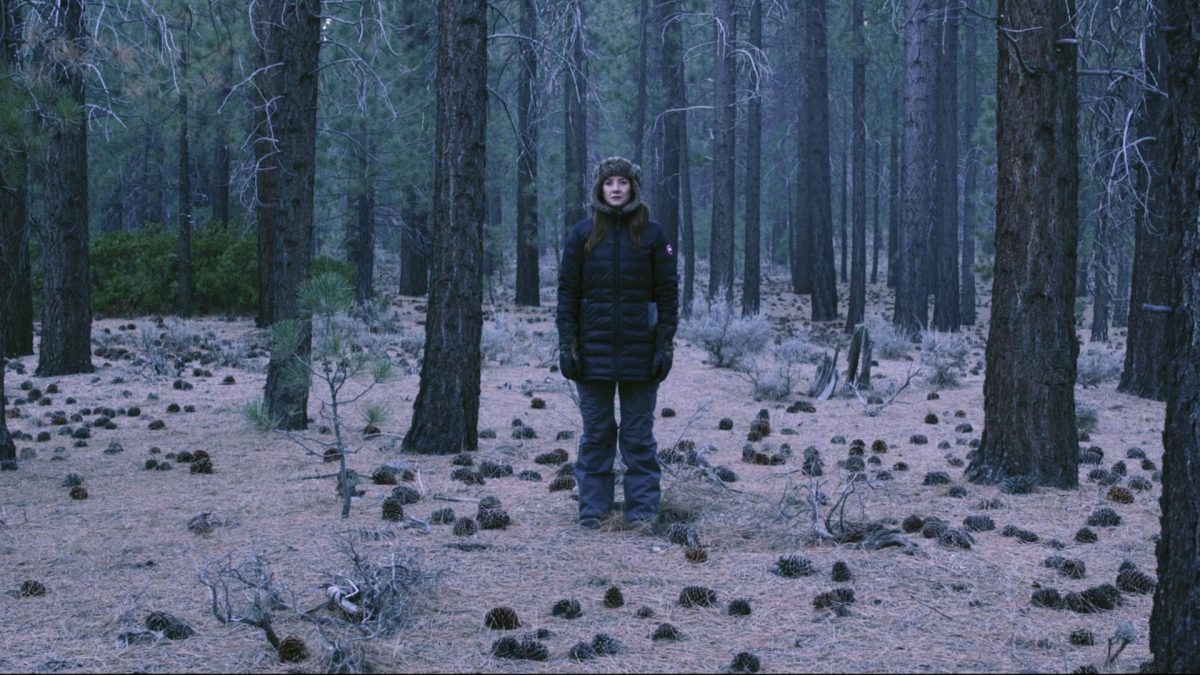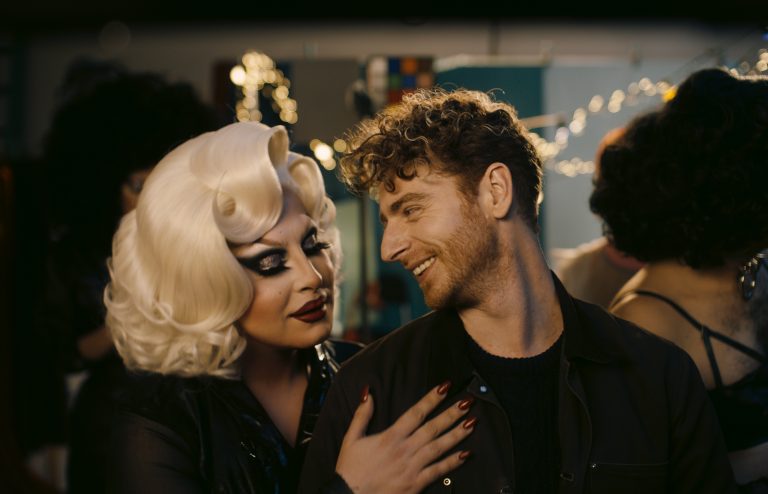Paul Bickel’s “Our Happy Place” (2024) is an atmospheric horror film about a woman trying to make sense of her life while confined to her home as she takes care of her bedridden husband. The movie reminded me of James Ward Byrkit’s “Coherence” and Nacho Vigalondo’s “Timecrimes.” Unlike them, “Our Happy Place” doesn’t have a sci-fi premise. Yet, it also revolves around suburban bourgeois couples who find themselves in life-altering situations. Whether a time-travel journey, an alternate reality, or a lingering mystery, all these films show these couples slowly losing control over the sense of safety and security that they hold dear.
Bickel’s film is also about the creeping feeling that the happy place built by a couple may not be so happy after all. It follows a woman seeing this utopian notion slowly being shattered as she pieces up every bit of detail about the film’s central mystery. Bickel tracks her in its isolated setting with the kind of footage that looks closer to home video than more common fine prints. This stylistic choice brings out the charming coziness of her life, which she is afraid of losing her grip over. So, underneath the film’s psychological horror is a tense, brooding drama about a woman slowly coming to terms with the fate of her relationship.
The film observes Raya (Raya Miles) as she goes about her daily routine without any spark of excitement. Most days, she sits by Paul’s (Paul Bickel) side, caring for him while he is hanging by a lifeline, barely surviving. He can barely speak a word, which makes her even lonelier. So, she drudges through her duties while wanting to find someone she can have a word with. She desperately hopes things go back to normal when the most they needed to care about were their trivial worries and not an endless cycle of misery with no sign of escape or respite.
Yet, no matter what, she keeps inching closer to her inevitable and impending doom every passing day. While living alone with an unresponsive companion, she gets increasingly weary and miserable and starts losing her grip on reality. Suddenly, she finds herself in a hole in the middle of the woods. It keeps happening every single day, but she has no idea how she gets there. Around then, she also sees some women through her dreamlike visions, but can’t quite trace them back in her memories. Meanwhile, the hole keeps getting bigger and bigger, which makes her increasingly paranoid.

With similar details, the film unfolds simultaneously like a mystery thriller as Raya tries to figure out whether she is simply dreaming everything or if there is something more than what meets the eye. Her supposed delusions start finding roots in her past and present, which amps up the paranoia of her already tragic life. Bickel relies more on atmospheric elements of his style to convey Raya’s gradually creeping dread than graphic violence or jump scares. The press notes suggest that he shot it during the pandemic. Yet, he ensures that the quarantine-based limitations do not limit his cinematic language.
Bickel uses the forest as the playground of its horror. It offers a natural sense of uncanny when compared to the comforting nature of Raya and Paul’s past interactions, which she recollects throughout the film. It highlights her sense of unease as she learns anything that cracks the mirage of her happy life. The film sways back and forth between looking clinical and gloomy to make us deeply aware of Raya’s deteriorating mental health through the seemingly contrasting nature of her dreams and reality.
It shows everything through her eyes, which gets us all wrapped up in her turmoil. Miles’ heart-wrenching performance makes it feel all the more personal and chilling. By doing so, it also operates like a suspenseful thriller about the way Raya untangles the mystery when every other clue feels misleading. Through this journey, she finds comfort only in her interactions with Amy (Tracie Thoms), her close friend who looks out for her through their video calls. However, the film demands we suspend disbelief more than once in situations that could have put a stop to Raya’s misery.
It’s common for horror films to struggle, at least moderately, in making viewers believe that their characters would willingly put themselves at the point of risk or not get help, even in the most desperate situations. “Our Happy Place” somewhat struggles on that front, but it still comes out as a complex and immersive horror film. It fleshes out the gradual decay of Raya’s psyche while using its minimal setting and a modest production budget to offer something spine-chilling and visceral.



![Sometimes in April [2005]: A Hard-Hitting Docudrama](https://79468c92.delivery.rocketcdn.me/wp-content/uploads/2016/01/95c5f123-50fd-4337-a056-e18d697be565.jpg)
![Lion [2016] – A Melodrama with Considerable Stretches of Admirable Nuance](https://79468c92.delivery.rocketcdn.me/wp-content/uploads/2017/02/lion-cover-768x512.jpg)
![This is not a War Story [2021] Review: A devastating yet knobbly look at PTSD](https://79468c92.delivery.rocketcdn.me/wp-content/uploads/2021/03/This-is-not-a-war-story-1-highonfilms-768x432.jpg)
![Shin Ultraman [2022]: ‘NYAFF’ Review – More like an episodic love letter to Ultraman by fans than a cohesive movie](https://79468c92.delivery.rocketcdn.me/wp-content/uploads/2022/07/SHIN-ULTRAMAN-MOVIE-REVIEW-3-768x512.jpg)
![Swiped Netflix [2018] Review- Swipe it Left](https://79468c92.delivery.rocketcdn.me/wp-content/uploads/2019/06/Swiped-Netflix-768x384.jpg)